Let’s be real: most balsamic vinaigrettes are fine. Forgettable, maybe, but inoffensive. They’re not going to ruin your day, and maybe that’s all some people are looking for in a salad dressing.
I am not one of those people.
I want a balsamic vinaigrette that balances serious savoriness with slight sweetness. I crave something with depth, tang, and a garlicky bite. I want the kind of meal-prep hero that comes together in less than 10 minutes but stays good in the fridge for nearly 2 weeks.
So I made the creamy, nuanced balsamic vinaigrette of my dreams. Welcome to the world of exquisite vinaigrettes.
Table of Contents:
1. Ingredient notes
2. Step-by-step instructions
3. Tips for making this recipe
4. How to use this Balsamic Vinaigrette
5. Frequently Asked Questions
6. Recipe card with notes
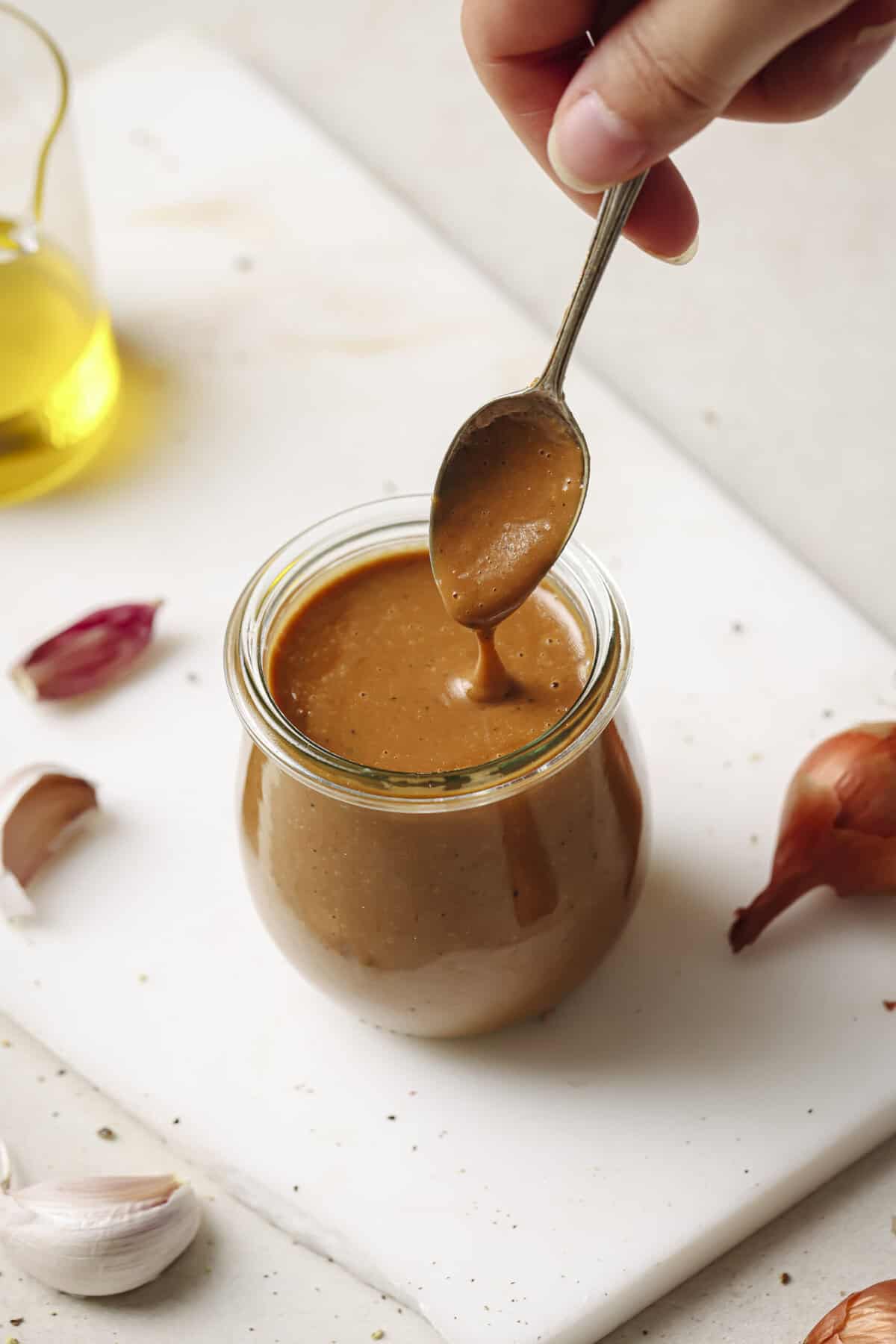
A classic vinaigrette, upgraded
Balsamic vinaigrette is a classic for a reason, so I’m not here to overhaul this time-tested blueprint for salad dressing. Instead, my version is less about reinvention and more about optimization rather than reinvention.
In developing this recipe, I zeroed in on what I consider to be classic balsamic vinaigrette’s two areas of opportunity:
- It can be a little thin in texture
- Most versions could use a flavor upgrade
The addition of shallots in my version brings a depth of flavor to the finished product that kicks everything up a notch or two. And I use a blender (or food processor) to whip everything into unmatched creaminess, which makes for a richer mouthfeel and helps it stay emulsified, unlike a lot of standard vinaigrettes which “break” (separate) easily.
The result? A luxuriously creamy balsamic vinaigrette that sings with tangy-sweet-garlicky goodness.
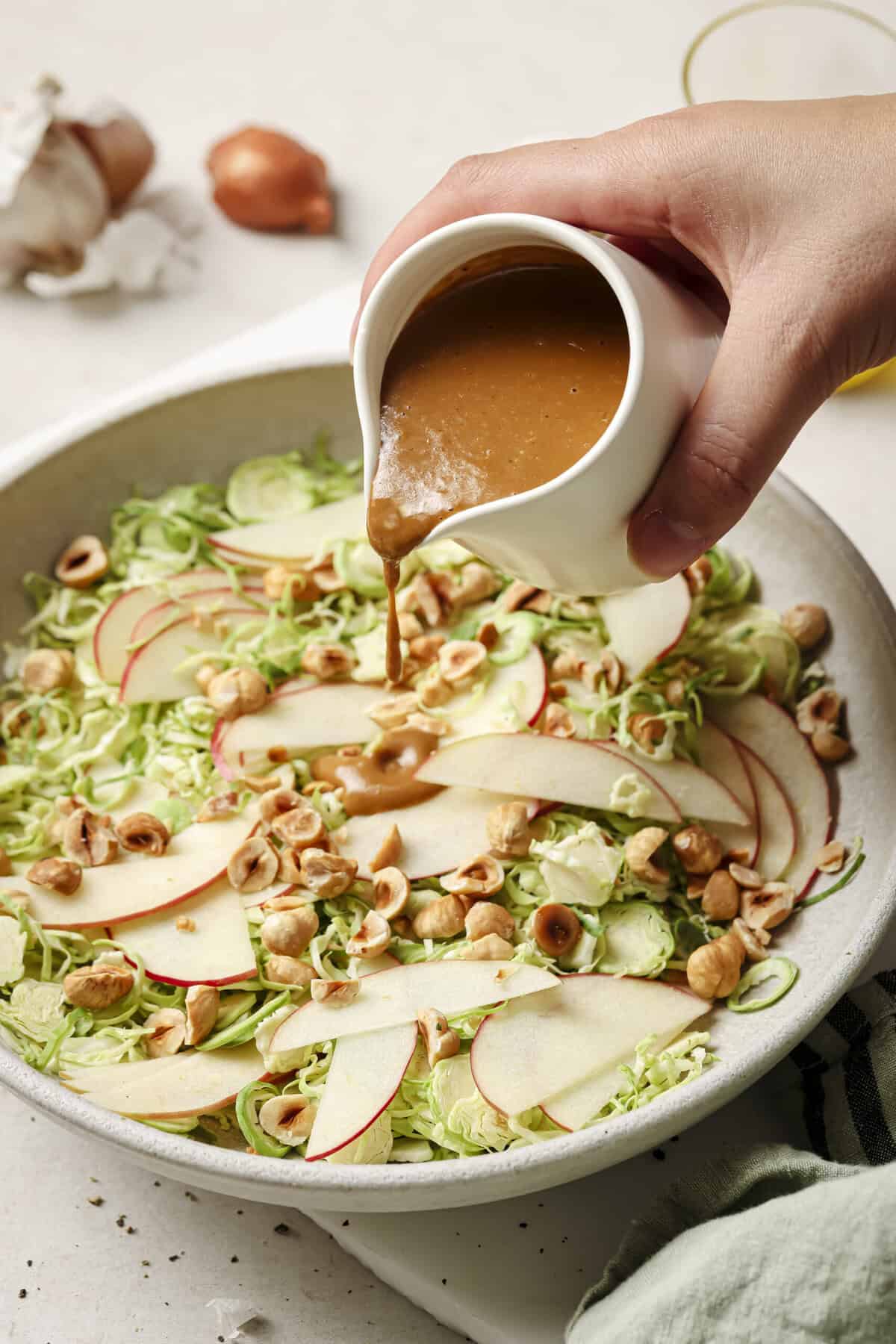
Ingredient notes
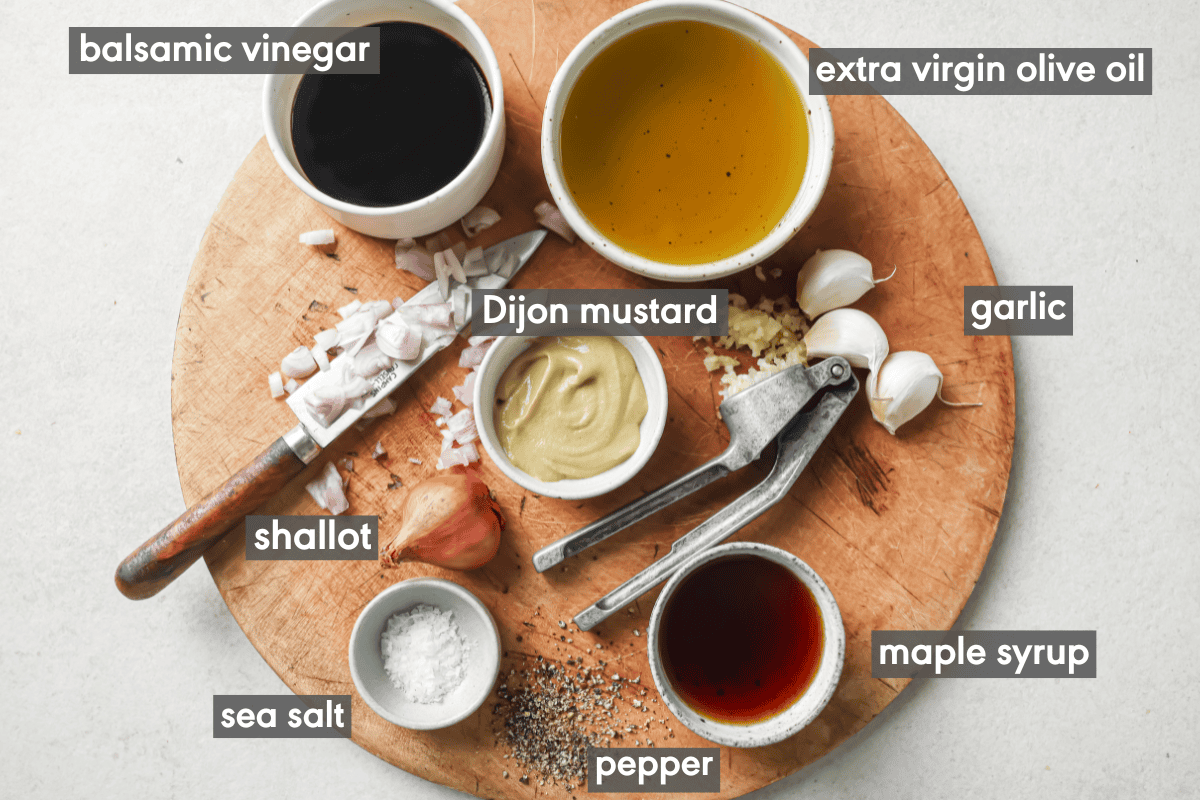
Aged balsamic vinegar
The key word here is “aged.” Not all balsamic vinegars are created equal—not by a long shot. And since the dressing is named for this ingredient, it’s worth paying attention to the type of balsamic vinegar you’re using!
Tips for buying: Look for products labeled “Balsamic Vinegar of Modena IGP.” These have been aged and are typically in the $10 to $40 range. “IGP” stands for Indicazione Geografica Protetta and certifies at least one stage of production took place in the traditional balsamic vinegar-producing region of Modena, Italy.)
Splurge pick: My absolute favorite brand is Giuseppe Giusti. They’ve been making balsamic vinegar for centuries. Yes, centuries. And while you certainly don’t need a vinegar as high-quality as this to make a good vinaigrette, if you have the means for a splurge, it’s a great investment that I whole-heartedly recommend.
Grocery store budget pick: I also really like Whole Foods Aged Balsamic Vinegar of Modena (1.3 density). The price to quality ratio is fantastic.
Shallot
This ingredient does double duty here: it adds a bit of a sharp punch that perks up your palate, and it helps thicken the vinaigrette when blended. We love a multi-purpose ingredient!
Garlic
What can I say? You can’t go wrong with garlic in a vinaigrette.
Dijon mustard
Mustard is a pillar of this vinaigrette not just from a flavor perspective (although it contributes a sharp tang that complements the sweeter tang coming from the balsamic) but because of its critical role as the emulsifier of the dressing.
Science-y explanation: Oil and vinegar won’t combine without the presence of a “surfactant,” something that attracts both water and oil molecules and binds them. Mustard contains lecithin, which is an excellent surfactant.
Extra virgin olive oil
You knew this one was coming—vinaigrette may be named for the vinegar, but it needs oil just as much! While most classic vinaigrette ratios recommend using three parts oil to one part vinegar, I find that to be way too oily.
I typically go with a 2:1 ratio of olive oil to vinegar, but in this recipe, I go down even further to a 1.5:1 ratio of olive oil to vinegar.
High-quality vinegar is not as sour as its lower-quality counterparts, so you don’t need such large quantities of oil to soften that edge.
Maple syrup or sugar
A little bit goes a long way here—we’re adding this primarily to balance the acidity of the dressing, not to make it sweet or maple-y in flavor. So here’s your opportunity to exercise your agency as head chef of your own kitchen: start slowly and taste as you go!
Step-by-step instructions
Combine the vinegar, mustard, garlic, shallot, salt, pepper, and maple syrup in a blender or food processor.
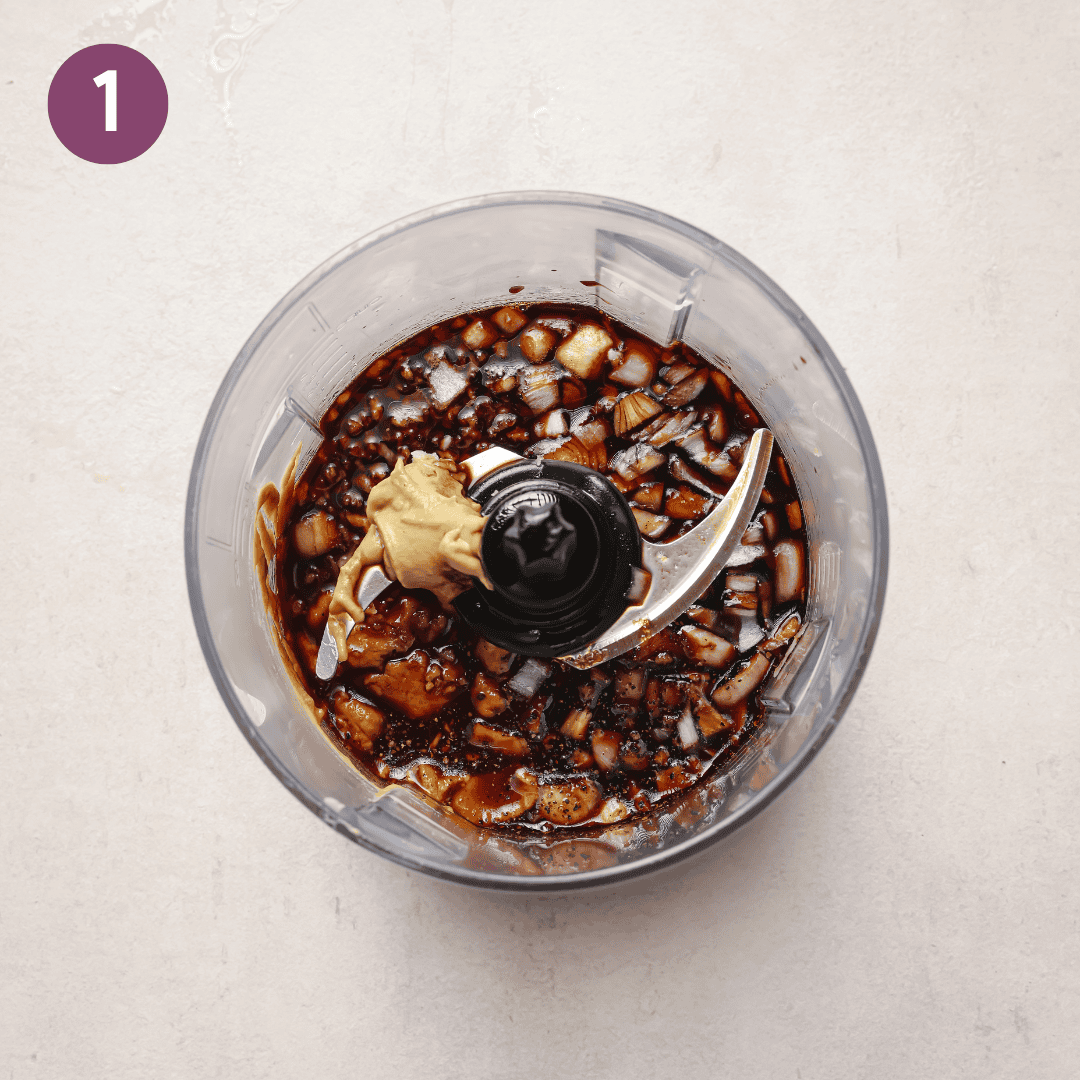
Blend until smooth, scraping down the sides as needed.
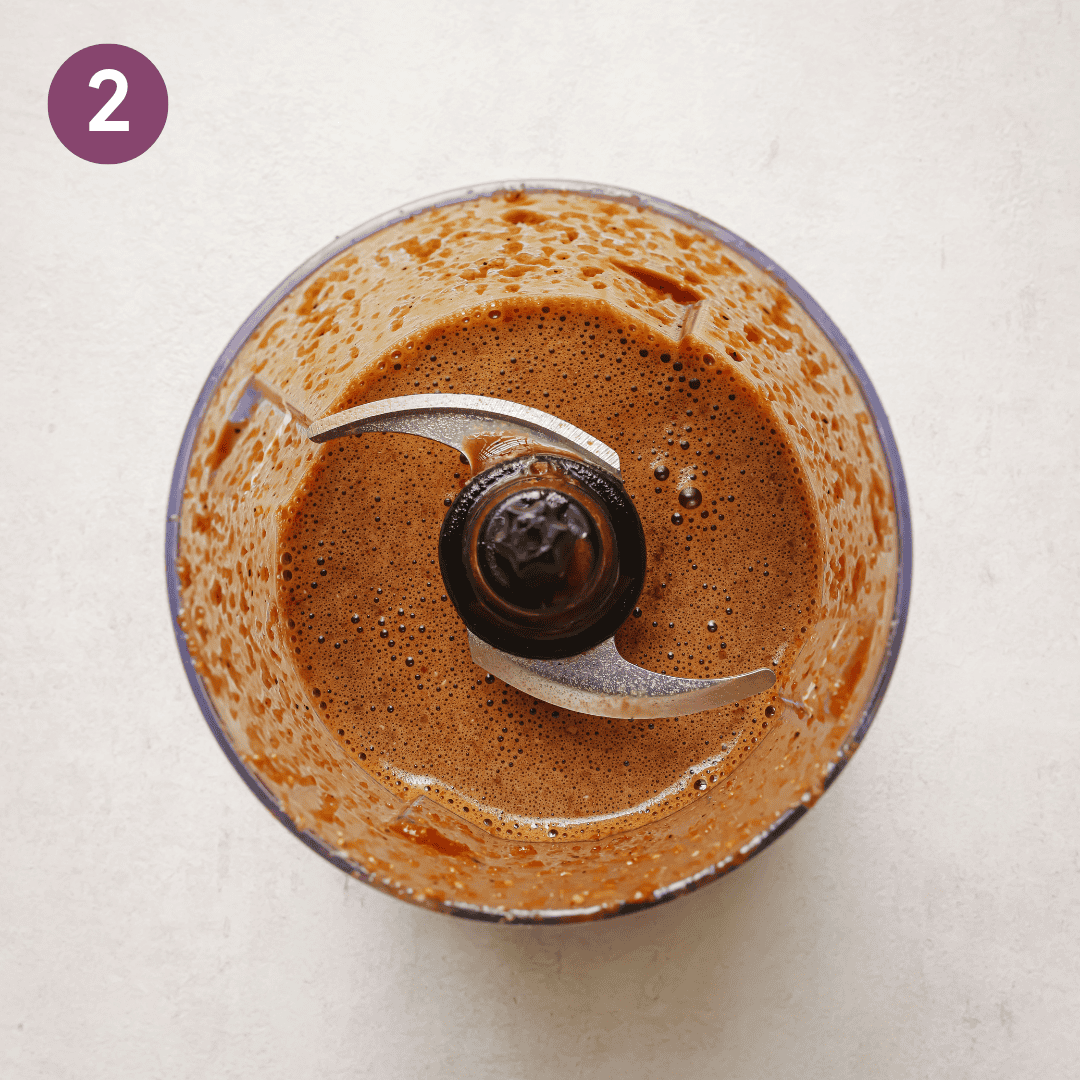
With the motor running, stream in the olive oil until the dressing is smooth and emulsified.
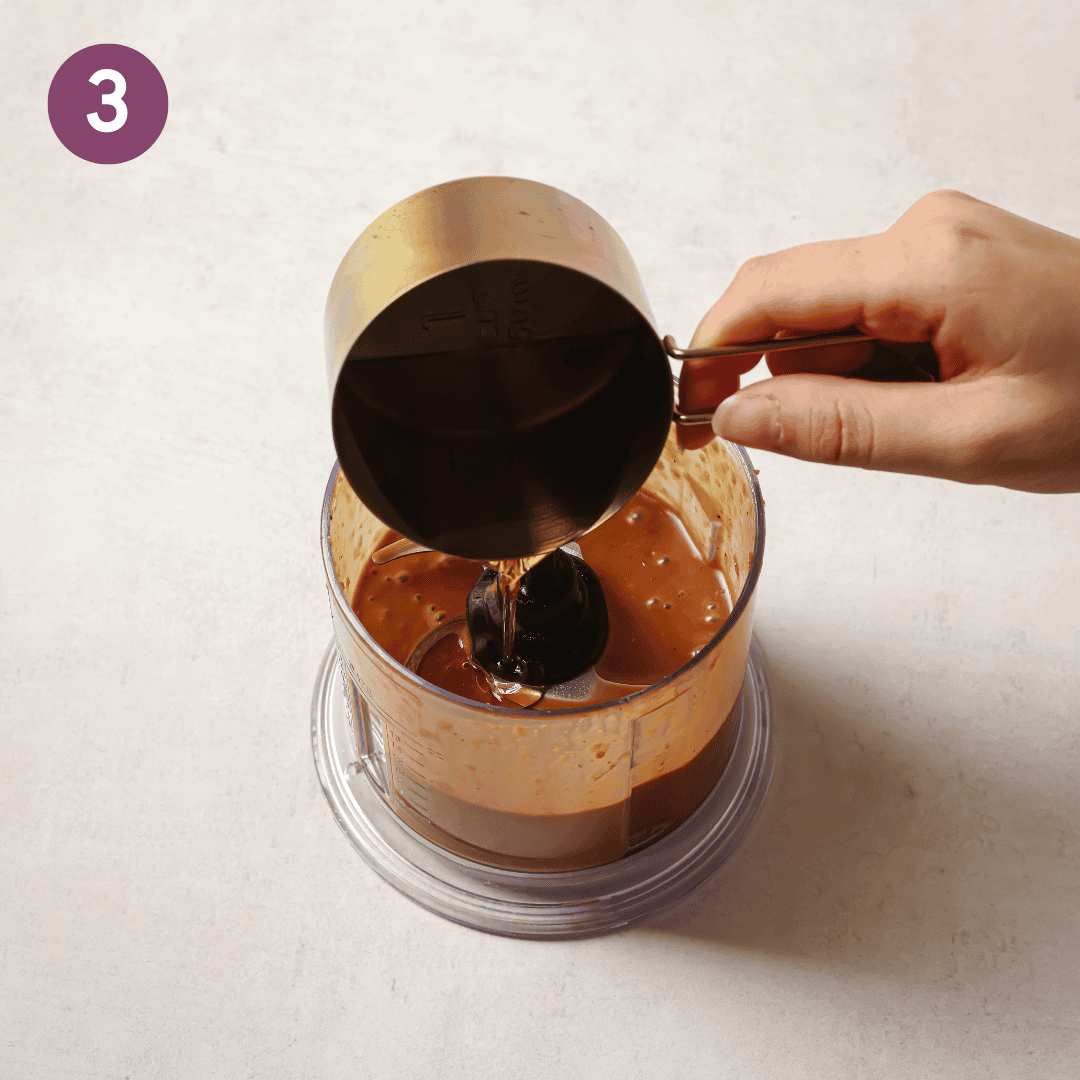
Store in a sealed jar in the fridge for 10 to 14 days.
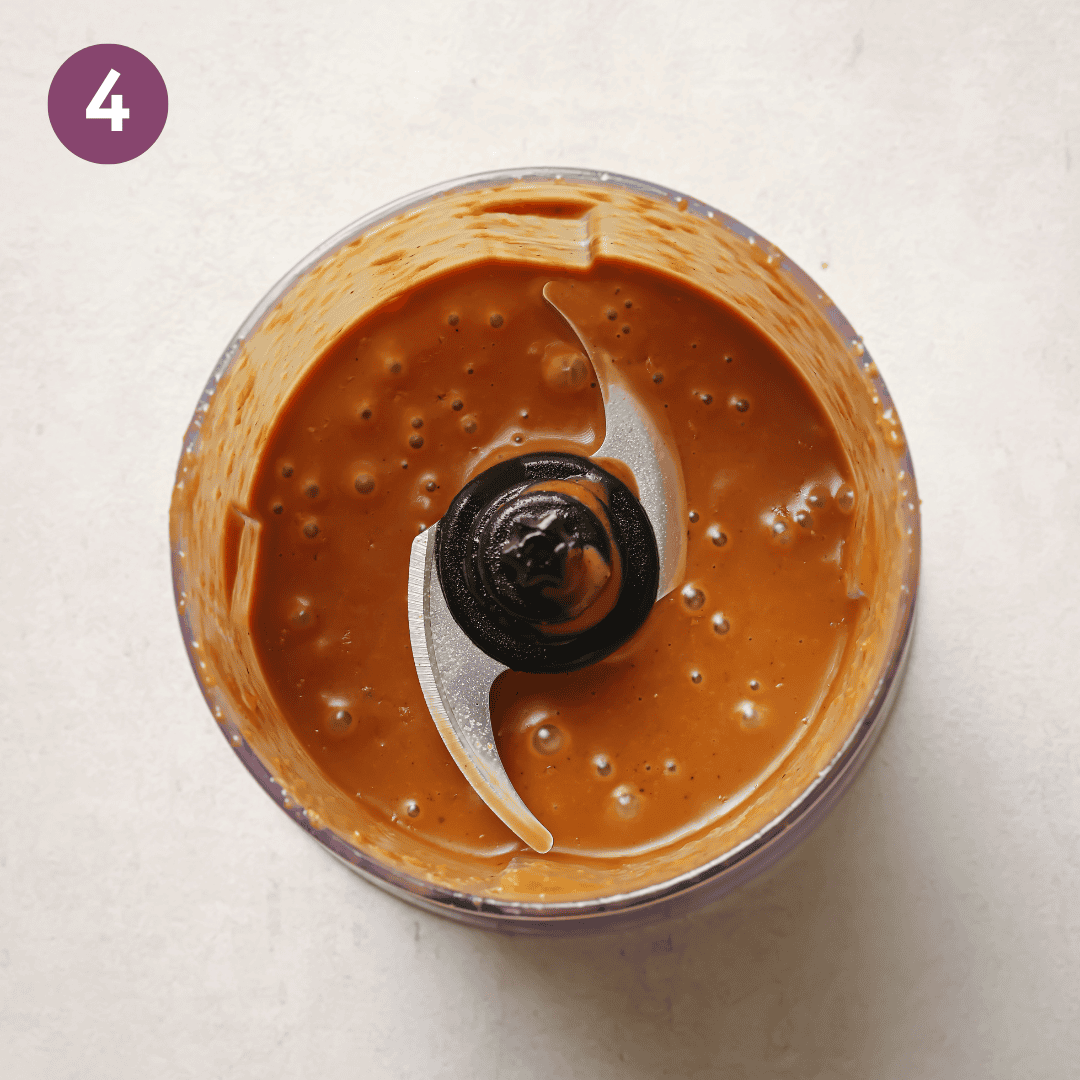
Tips for making this recipe
The balsamic vinegar matters
When there are so few ingredients, as in this recipe, each element has to bring its A-game, flavor-wise. And balsamic vinegar is the star ingredient here.
So leave that $3 bottle on the supermarket shelf. That stuff is imitation balsamic vinegar and it’s sour, watered down, and not worth buying.
Instead, try an aged balsamic vinegar like these:
- Splurge pick: A vinegar that will maybe change your life and definitely rock your world: Giuseppe Guisti’s Gran Deposito Aceto Balsamico di Modena IGP
- Affordable pick: A high-quality vinegar at a lower price point: Whole Foods Aged Balsamic Vinegar of Modena (1.3 density)
A good balsamic vinegar won’t just serve you in this recipe, but any time you need balsamic vinegar.
No blender or food processor? No problem.
If you don’t have a blender or food processor, use one of these two options:
Immersion blender: Add all the ingredients to a wide-mouth jar or a wide glass and use an immersion blender to blitz it together
Classic method: Finely mince the shallot and garlic (use a microplane/grater if you’ve got one), then add everything to a bowl except for the olive oil. Stream in the oil while whisking (vigorously!) to emulsify.
Double the recipe
This recipe yields ¾ cup (175g), about 6 servings. If you are feeding a crowd or plan to use it multiple times throughout the week, simply double the ingredients.
It stays good in the fridge for 10 to 14 days, so you’ve got time to use it!
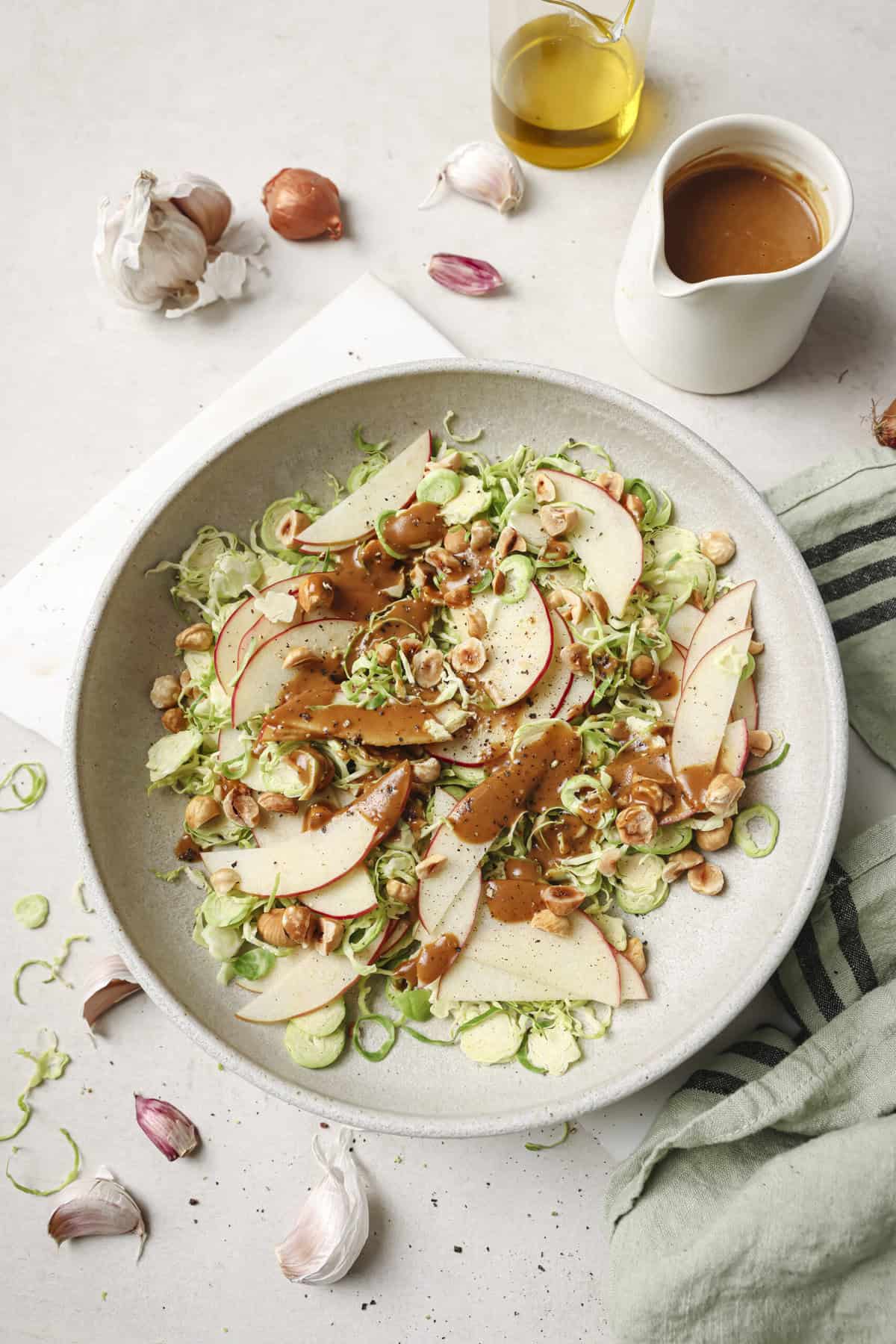
How to use this Balsamic Vinaigrette
We’ve reached my favorite part of the blog post—dreaming up the many delectable ways to use this dynamite dressing. Let’s dig in.
Superb salad suggestions
This dressing would zhuzh up even the simplest of green salads. But if you want to get fancy, try one of these combos:
- Roasted pumpkin or squash + arugula
- Shaved Brussels sprouts + sliced apples + chopped hazelnuts (as pictured in this blog post’s photos 😍)
- Shaved fennel + beets + orange slices
- Shaved fennel + figs + arugula
- Radicchio + sliced pear + chopped walnuts
- Endive + blood orange segments + pumpkin seeds
- Strawberry + avocado
Dare to drizzle
This dressing would be absolutely exquisite drizzled over:
- A summer tomato salad (tomatoes + balsamic vinaigrette, a no-brainer)
- Avocados sprinkled with sea salt (for a decadent-seeming wholesome snack)
- A spread of gourmet vegan cheeses (for a crowd-pleasing appetizer)
- A roasted veggie sandwich (not to make your sandwich for you buuuuut I’m thinking eggplant, zucchini, red peppers, arugula 🤤) on toasted sourdough or ciabatta
- Crostini, sweet or savory!
- Sweet: Whipped tofu ricotta + figs
- Savory: Whipped tofu ricotta + charred or grilled zucchini + basil
Dress for success
A few more mouth-watering ideas:
- Pour over a warm grain bowl with farro, roasted sweet potatoes, crispy roasted chickpeas, and greens. I am drooling as I type this, thinking about the sweet-savory-tangy combo.
- Spoon over roasted vegetables, especially those with natural bitterness like broccoli or Brussels sprouts
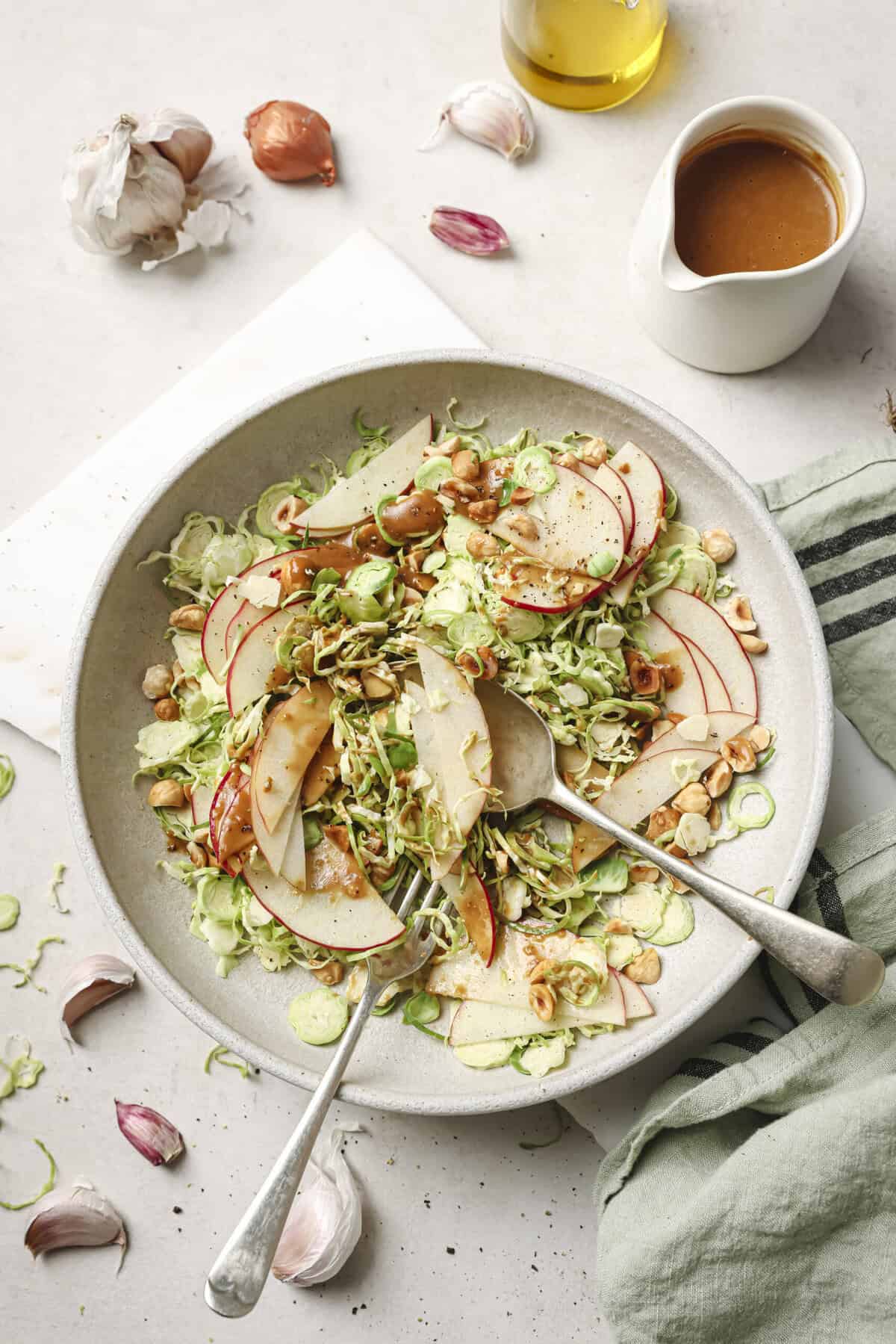
Frequently Asked Questions
Absolutely (and high five, you maven of meal prep, you)! Store the vinaigrette in a large sealed jar in the fridge. It will stay good for 10 to 14 days.
This is actually expected, as olive oil naturally starts to solidify at around 45-50°F (7-10°C). Luckily, it’s a cinch to return the dressing to its original, creamy consistency.
Simply set the sealed jar of vinaigrette in a bowl of hot water and wait until the oil liquefies, then whisk the dressing (or shake the jar vigorously) until the vinaigrette re-emulsifies.
*Sigh* How I wish I could tell you what you want to hear, but the truth is, vinaigrettes do not freeze well, as the oil and vinegar separate when frozen and thawed. The resulting texture is grainy and unappealing.
If you must freeze it, try freezing leftovers in small quantities in an ice cube tray. Once frozen, you can pop the cubes out into a freezer-safe bag. Before using, thaw the cubes in the fridge and re-blend to emulsify.
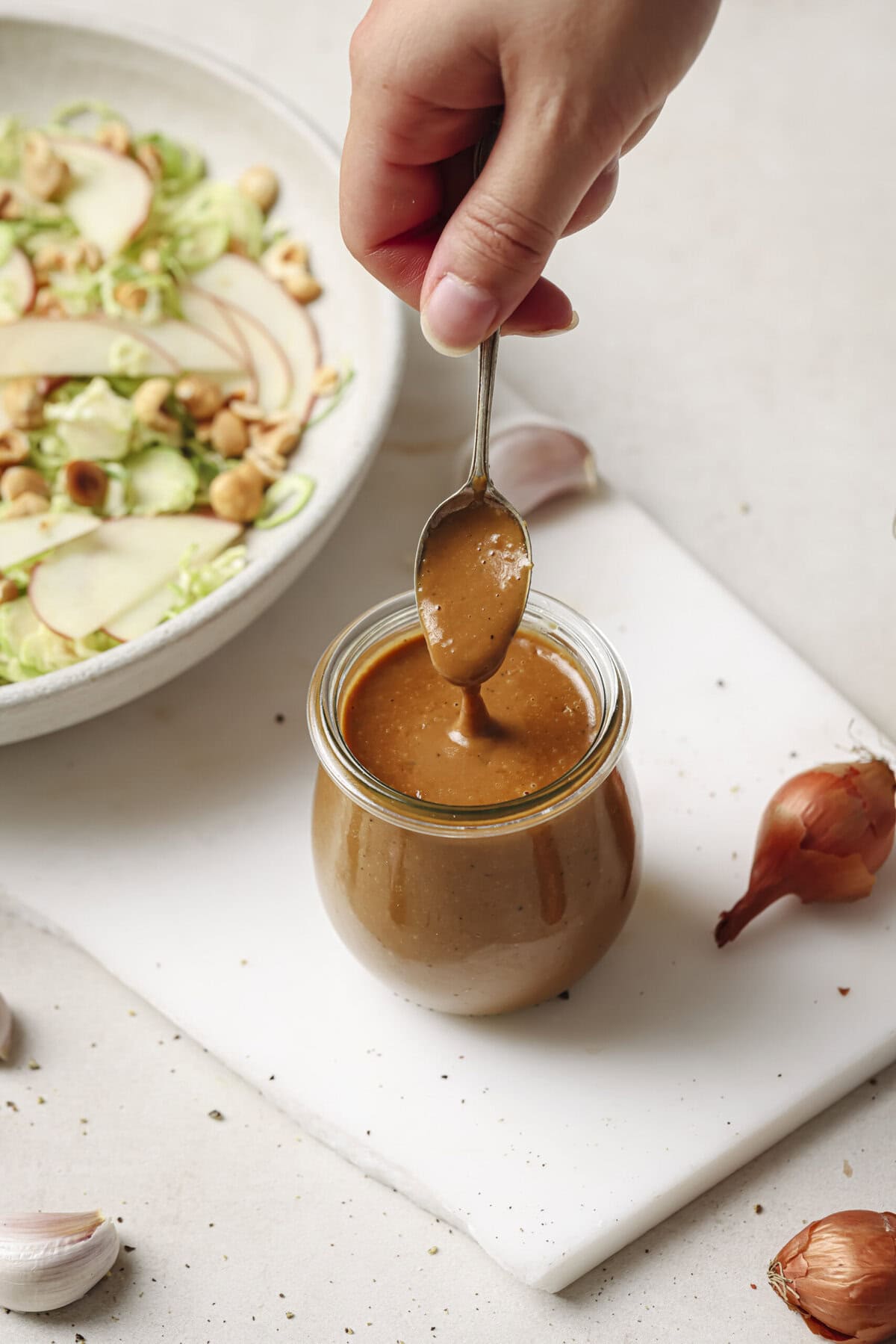
Ready to usher in the era of exquisite balsamic vinaigrettes? Leave a rating and a review—I truly love hearing from you!

Big Vegan Flavor
Techniques and 150 recipes to master vegan cooking.

Introducing
Big Vegan Flavor
Techniques and 150 recipes to master vegan cooking.
Creamy Balsamic Vinaigrette
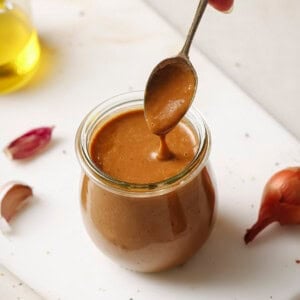
Ingredients
- ¼ cup (60g) aged balsamic vinegar (365 brand)
- 1 tablespoon Dijon mustard
- 2 cloves garlic minced or grated (you can roughly chop if using a high-powered blender)
- 1 small shallot roughly chopped (see Note 1)
- ½ teaspoon fine sea salt plus more to taste
- Freshly cracked black pepper
- ¼ cup + 2 tablespoons (84g) extra virgin olive oil
- 1 ½ to 3 teaspoons maple syrup or organic cane sugar
Instructions
- To a food processor (or small-capacity blender, see Note 2), add the following ingredients: balsamic vinegar, Dijon mustard, garlic, shallot, salt, a generous amount of black pepper, and 1 ½ teaspoons maple syrup or sugar.
- Blend until smooth, scraping down the sides as needed. With the motor running, stream in the olive oil and blend until the olive oil has emulsified the dressing. Taste, adding more maple syrup for sweetness and season with salt or pepper as needed.
- Store in a sealed jar in the fridge for 10 to 14 days. If the oil solidifies in the fridge, simply add the sealed jar to a bowl of hot water and wait until the oil liquefies. Then whisk again (or shake the jar vigorously) to re-emulsify.
Notes
- If you are not sure how much a small shallot is, start with 2 tablespoons minced or sliced shallots. Taste, then add more as desired.
- Since this is a small quantity, you will need a small-capacity blender cup (I use my 32-oz Vitamix jug). If you don’t have a food processor or small-capacity blender, you can (a) add the ingredients to a wide-mouth jar or wide glass and use an immersion blender to blend; or (b) finely mince the shallot and garlic; add all the ingredients to a bowl except for the olive oil; stream in the olive oil, whisking as you go, until emulsified.
Nutrition
Nutrition information is automatically calculated, so should only be used as an approximation.




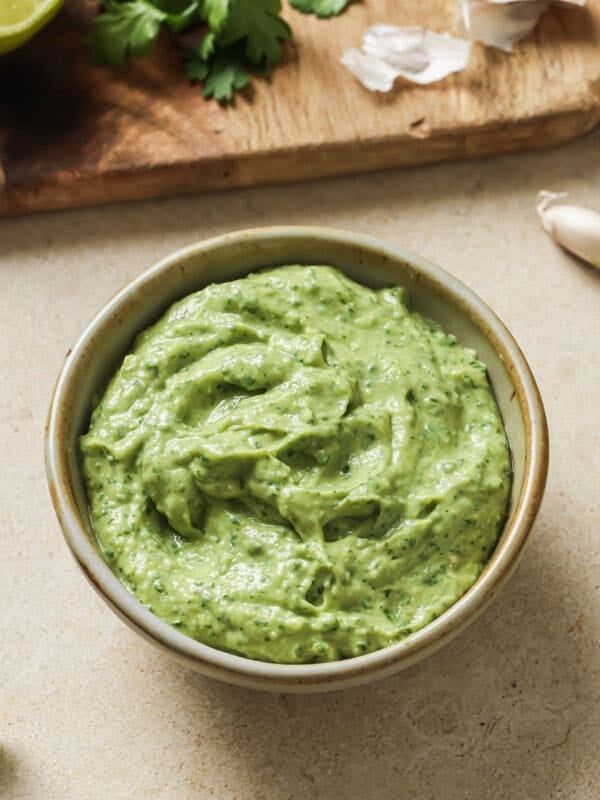
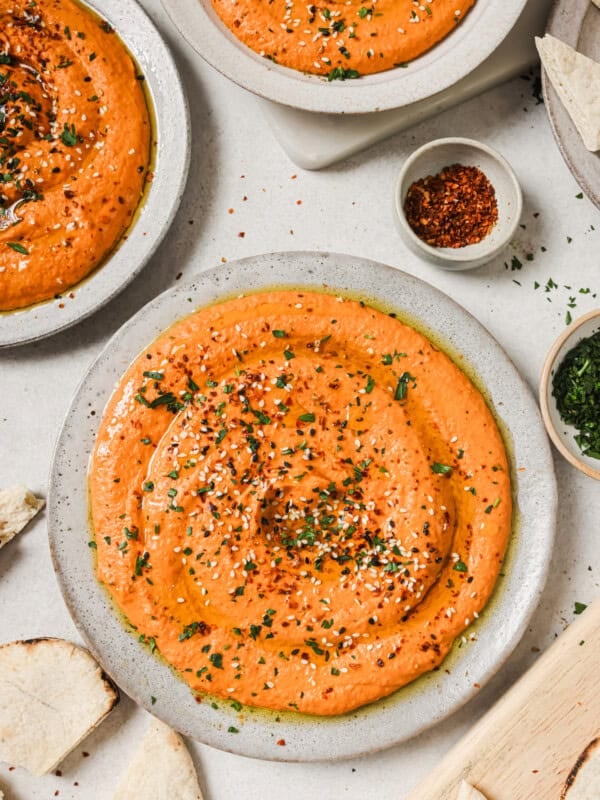









I am fairly new to Rainbow Plant Life (easily one of my best discoveries of the year!) so I started simple by making the Whipped Tofu Ricotta (delicious), and then this Creamy Balsamic Vinaigrette. The vinaigrette was so good, I ended up amending my entire meal plan for the week, just so I could eat things that this deceptively simple, but utterly wondrous vinaigrette could be slathered over. Such a great discovery. Thank you, Nisha!
Amazing! Thanks for the lovely review, Celia 🙂
Wow I really appreciate how you recommend good quality ingredients. I never would’ve bought that guiseppe giusti vinegar but it is life changing
I agree, K! I recently bought a bottle and won’t be going back. Thanks for the sweet review!
Wow this is so DELICIOUS i just had leave a comment when i normally dont do this. Thank you so much!
Your positive feedback is the best reward for our hard work. Thank you, Paula!
Omg, that’s crack. I wasn’t having salad for dinner tonight until I made the dressing and now I’m having salad for dinner. Can I just dip bread in it? No. Restrain yourself. 😉
Thank you Nisha! 😊
Thank you for your lovely comment, Leslie! It makes us happy to know that you enjoyed the dressing. How about a salad AND some bread?! Seems like a great dinner to me!
Nisha! You are such an inspiration! I’m always clicking on Rainbow Plant Life recipes that are extra special and full of flavor🙏🏼 Thank you!!!
We appreciate it more than you know, Jamie! 🙂
I made this Creamy Balsamic Vinaigrette today and it was delicious! Looking forward to having it again! Thank you!
Hi Maye, thank you so much for your kind review!